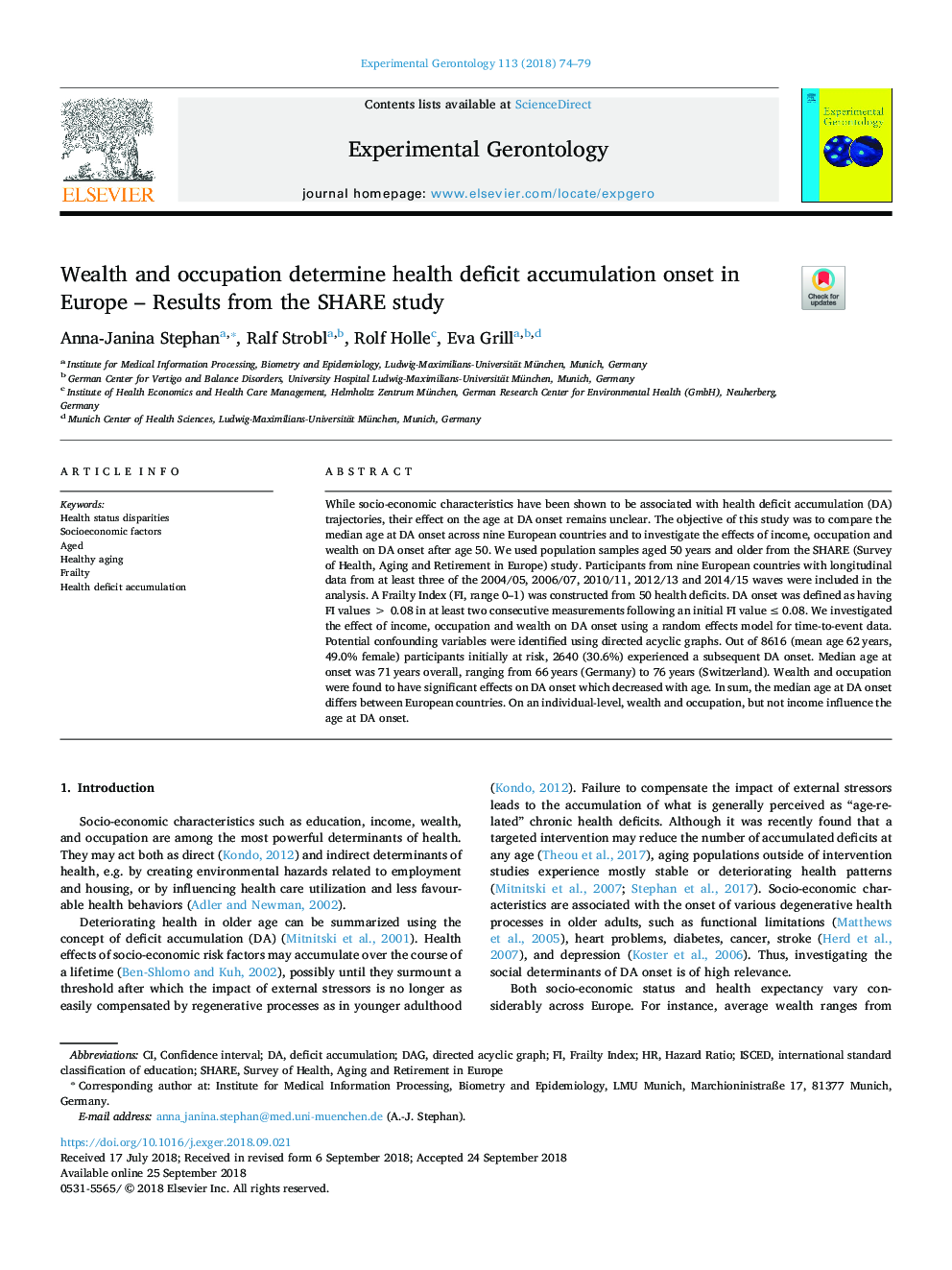| Article ID | Journal | Published Year | Pages | File Type |
|---|---|---|---|---|
| 11026201 | Experimental Gerontology | 2018 | 6 Pages |
Abstract
While socio-economic characteristics have been shown to be associated with health deficit accumulation (DA) trajectories, their effect on the age at DA onset remains unclear. The objective of this study was to compare the median age at DA onset across nine European countries and to investigate the effects of income, occupation and wealth on DA onset after age 50. We used population samples aged 50â¯years and older from the SHARE (Survey of Health, Aging and Retirement in Europe) study. Participants from nine European countries with longitudinal data from at least three of the 2004/05, 2006/07, 2010/11, 2012/13 and 2014/15 waves were included in the analysis. A Frailty Index (FI, range 0-1) was constructed from 50 health deficits. DA onset was defined as having FI valuesâ¯>â¯0.08 in at least two consecutive measurements following an initial FI valueâ¯â¤â¯0.08. We investigated the effect of income, occupation and wealth on DA onset using a random effects model for time-to-event data. Potential confounding variables were identified using directed acyclic graphs. Out of 8616 (mean age 62â¯years, 49.0% female) participants initially at risk, 2640 (30.6%) experienced a subsequent DA onset. Median age at onset was 71â¯years overall, ranging from 66â¯years (Germany) to 76â¯years (Switzerland). Wealth and occupation were found to have significant effects on DA onset which decreased with age. In sum, the median age at DA onset differs between European countries. On an individual-level, wealth and occupation, but not income influence the age at DA onset.
Keywords
Related Topics
Life Sciences
Biochemistry, Genetics and Molecular Biology
Ageing
Authors
Anna-Janina Stephan, Ralf Strobl, Rolf Holle, Eva Grill,
